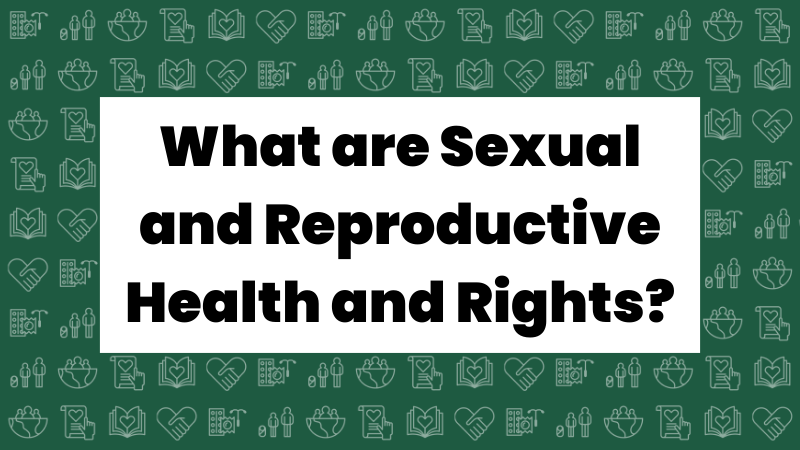What are Sexual and Reproductive Health and Rights?

In 1994, the International Conference on Population and Development (ICPD) formally recognized that reproductive rights were linked to human rights. In Cairo Conference, with the adaption of the Programme of Action, brought a sharper focus on women and introduced a new concepts such as sexual and reproductive health and reproductive rights. The conference achieved consensus on key issues such as universal access to education, reduction of infant, child and maternal mortality, and access to reproductive and sexual health services, including family planning.
Advocating for and investing in Sexual and Reproductive Health and Rights (SRHR) is both morally and practically sound. Politically, legally, socially, and economically, it stands as a crucial endeavor. Not only does it preserve lives and enhance well-being, but it also plays a pivotal role in upholding human rights, diminishing poverty and discrimination, fostering gender equality, empowering vulnerable populations, and advancing sustainable development.
“Sexual and reproductive health is a state of physical, emotional, mental and social well-being in relation to all aspects of sexuality and reproduction, not merely the absence of disease, dysfunction or infirmity. Therefore, a positive approach to sexuality and reproduction should recognize the part played by pleasurable sexual relationships, trust and communication in promoting self-esteem and overall well-being. All individuals have a right to make decisions governing their bodies and to access services that support that right.” Guttmacher-Lancet Commission report, Accelerate progress, Sexual and Reproductive Health and Rights for all, available at Guttmacher-Lancet Commission report.
Ensuring everyone’s access to SRHR requires a holistic approach, taking into account the different sectors and aspects contributing to SRHR. It is important not to ignore the role of men and other genders in advancing the agenda on SRHR.
Read more:
State of World Population (UNFPA 2024)
Sexual and reproductive health and rights: infographic snapshots (WHO 2022)